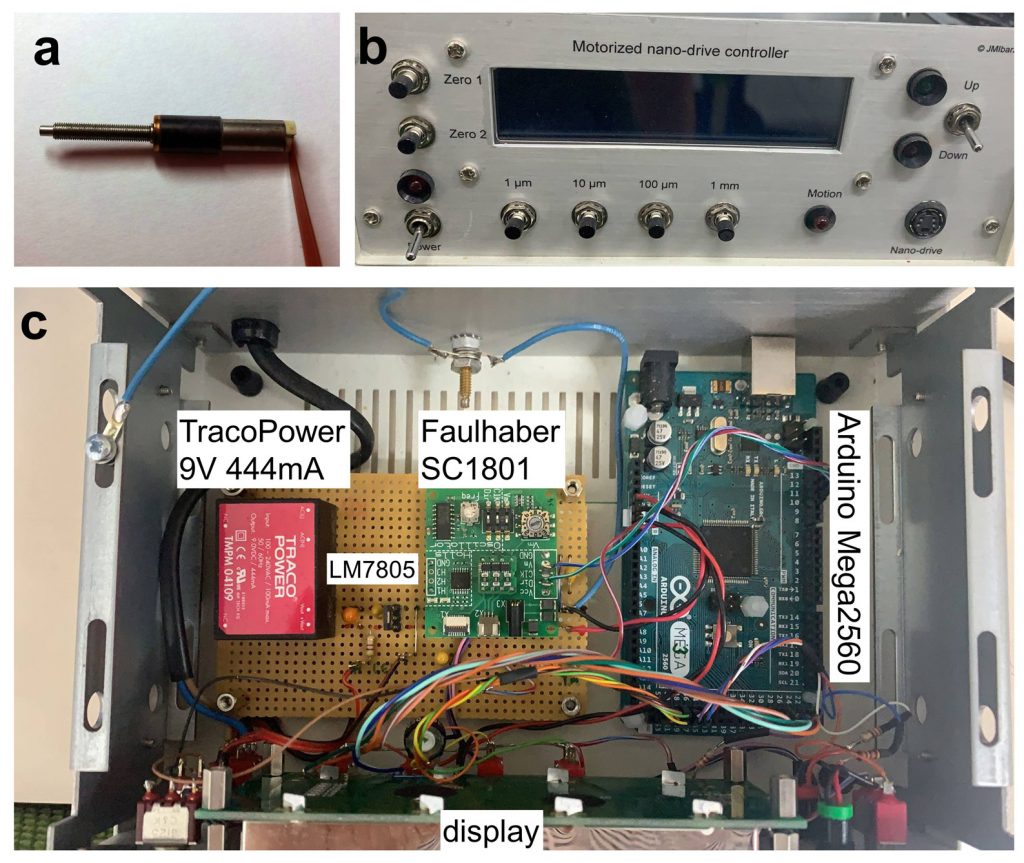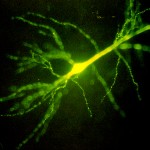by Manuel Valero, Jose M Ibarz and Liset M de la Prida
Targeting single neurons in freely moving conditions, either for electrophysiological or for histological purposes, is challenging. We have developed a microdrive system consisting on a micro-motor controlled by an Arduino which allows advancing at micrometer resolution. The system can be coupled to a 3D-printed microdevice to host the desired instrument. We used this system for obtaining electrophysiological recordings and labeling of individual hippocampal neurons from freely moving rodents.
The main element is a Faulhaber burshless DC servomotor Series 3A S3 (Fig.1a; 0308A003B+ 03A S3), which rotates a hex nut. The nut can be coupled to a shuttle to advance the desired instrument (e.g. a glass pipette). An Arduino-based controller was developed to control the motor movement at steps of 1, 10, 100 and 1,000 μm in both directions (up and down). The controller front panel permits controlling for several features (Fig.1b). This includes establishing two indepent zeros, to ease estimation of the advanced distance, moving up and down, and establishing the movement resolution. The electronic circuit and Arduino connections are hardwired (Fig.1c). The component list, electronic circuit and Arduino code are all available upon request.

See Valero et al., Neuron 94(6), 1234-1247 (2017) for application in recording and labeling individual hippocampal cells in vivo. See Cid et al, J Neu Methods 2019 for methodological details.
